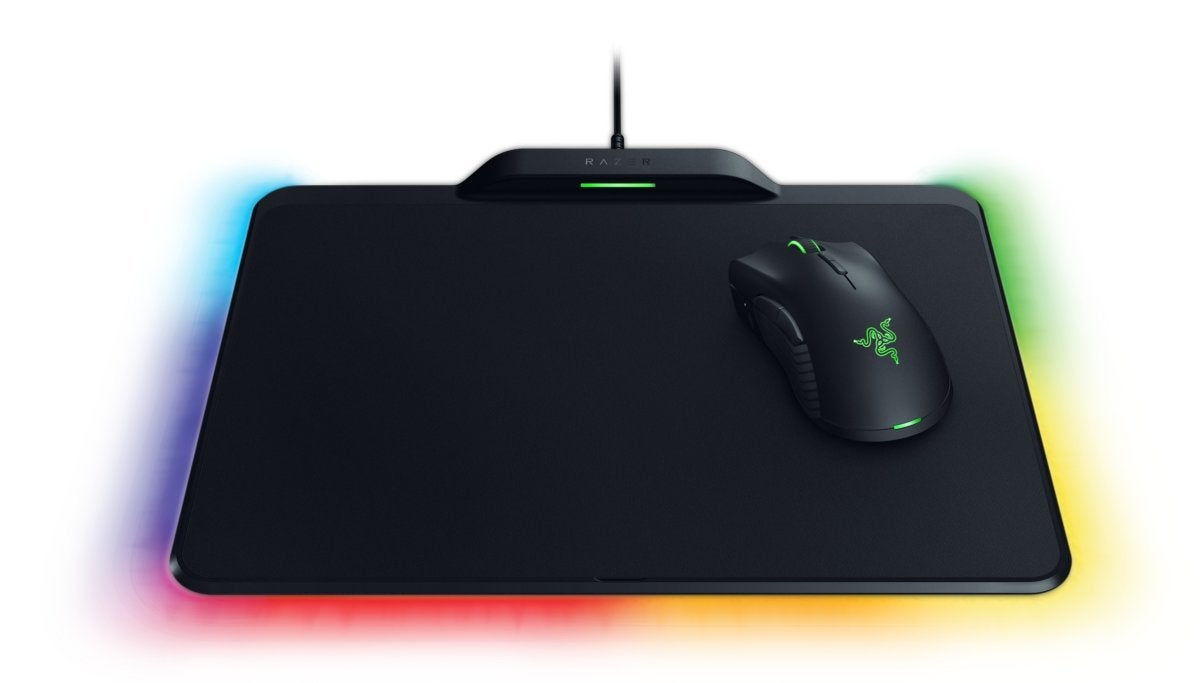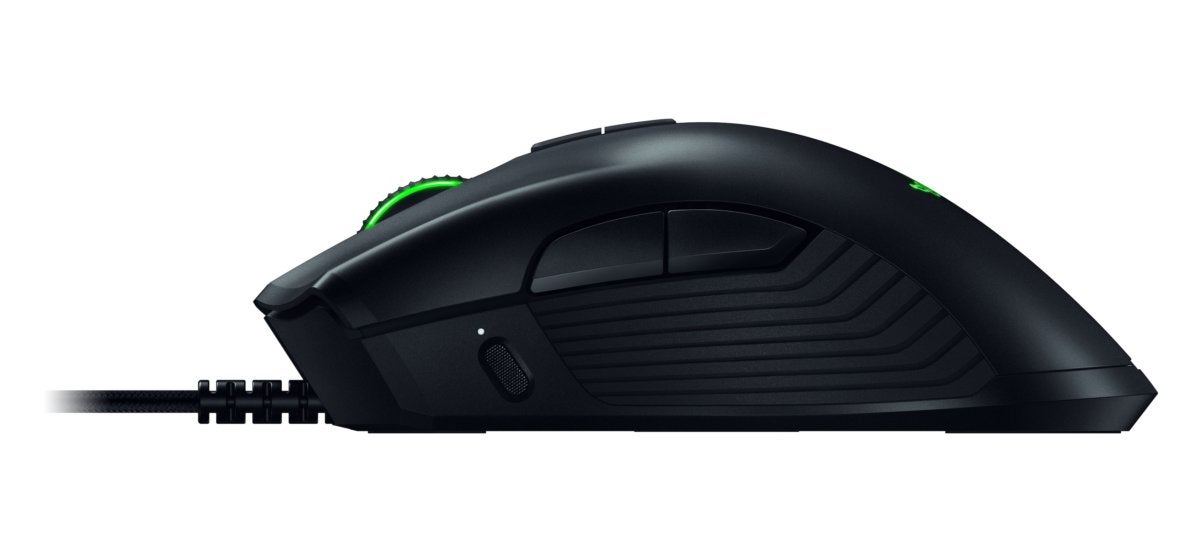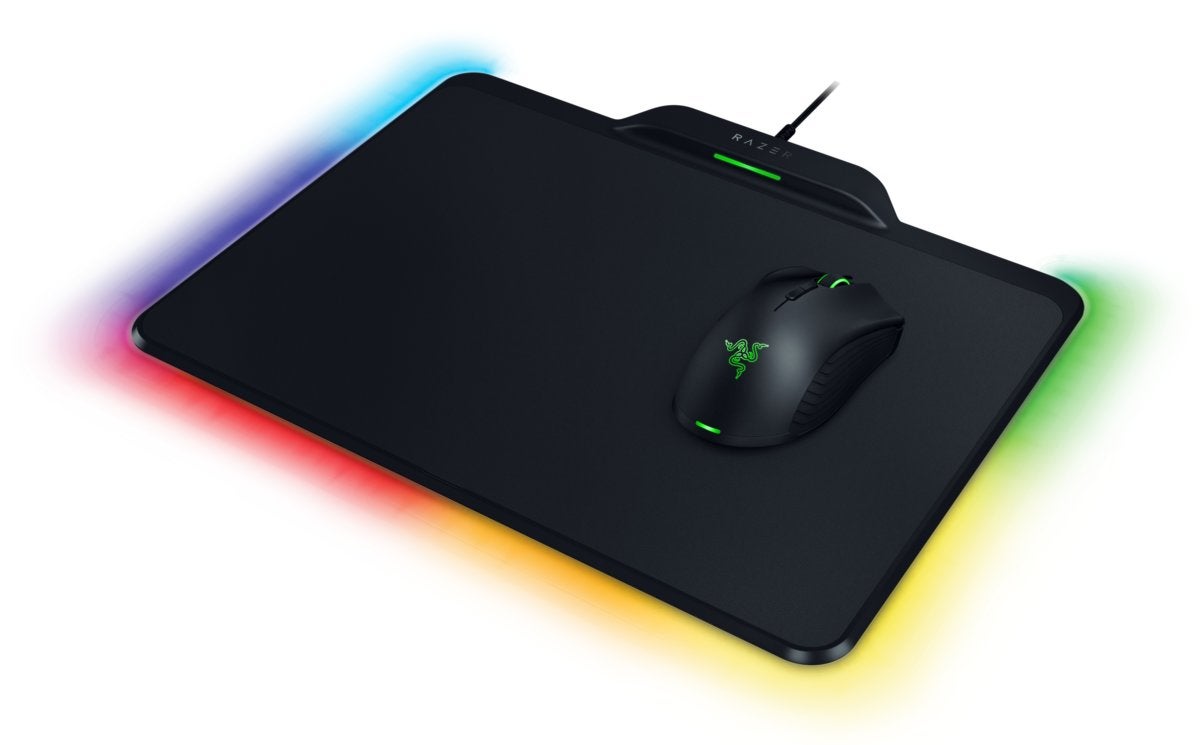Razer’s HyperFlux Mamba is a self-charging mouse with no wires and no battery - raydompen
Logitech's Powerplay engineering was one of my favorite bits of hardware in 2017—a tune mouse that actually charged without wires, thanks to a mousepad with built-in synthetical charging. It's so revolutionary, I assumed the competition wouldn't be remote behind.
I was both powerful and wrong connected that account. Now at CES, Razer announced a new interpretation of its RGB-enabled Firefly mousepad, the Firefly HyperFlux. That "HyperFlux" surname is of item importance, as it's the list Razer's given to its version of Powerplay—though in that respect are key differences you should know about.
Empty inside
Head among them: HyperFlux has no bombardment.
See, Logitech's Powerplay uses what's au fond just a normal wireless sneak away, complete with battery. The G703 and G903 mice are both Powerplay-well-matched, but you can also buy or manipulation a G703 or G903 separately—they both ship with Logitech's standard wireless mouse dongles, can be charged through USB suchlike natural tune mice, and store a charge if you take them off the Powerplay mousepad.
 Razer
Razer Like Powerplay, HyperFlux transfers office wirelessly from the redesigned Lightning bug mouse mat to a special version of Razer's Mamba black eye. The similarities end on that point though, because where Logitech stores that power in a electric battery, HyperFlux plainly powers the Mamba now.
Or as Razer puts it: It's a wireless mouse with the weight of a wired mouse.
That's the main benefit. Batteries are relatively heavy, with both the G703 and G903 coming in over 100 grams as a result—107 and 110 grams, to be specific. And that's shockingly light for a wireless mouse. Almost radio set mice come in around 120 or 130 grams.
Around people—competing gamers in fussy—do it whippersnapper mice though, with 100 grams commonly cited as a tipping point. That makes Razer's new Mamba a potential winner, as it's listed here at 96 grams. And for comparison, the current wireless Mamba (with battery) is listed arsenic a large 125 grams, so ditching the shelling's saved Razer quite a bit of weight.
 Razer
Razer But I'm curious to see how HyperFlux works solar day-to-day. I was skeptical of Powerplay before it free. "Could it in truth clear the charging problem for wireless mice?" And then it did, and I was bowled over.
HyperFlux is similar in principle, simply the miss of battery means we'rhenium in uncharted waters again. E.g., there are dependable areas of Logitech's Powerplay mousepad where my mouse doesn't incur a charge—for the most part along the uttermost edges and in the corners. The charging field besides extends only a few millimeters at most supra the mousepad, so I lose exponent whenever I lift and adjust the pussyfoot. And that's fine, because at that place's A battery to fall back on.
What happens in the same scenario with HyperFlux? Does the mouse lose power entirely? Or has Razer managed to exsert the powered field crosswise and importantly above the entire Fire beetle mousepad? An important interrogative, and peerless I probably North Korean won't solve until I've had some time with HyperFlux.
I'm also curious to see whether I miss the wireless capabilities when I'm forth from my desktop. With Powerplay, I just pack the G703/G903's standalone dongle and bring it with me. With the HyperFlux Mamba, you'll need to bring out along a USB cable and wont it wired until you're rearward at your mouse mat. Will that matter? Again, I don't know.
 Razer
Razer The most confusing aspect though is the price. I already thought Powerplay was expensive—it's $100 for the mousepad, and then an additional $100 for the G703 Oregon $150 for the G903. Expensive!
I fractional-expected Razer to compete on terms, especially since the Mamba doesn't include A battery. No such luck, though. The Firefly HyperFlux and Mamba software program lists for $250 flat, thus not lonesome are you not saving money, you're actually disbursal as much equally Logitech's premium package. That seems pretty wild, considering Logitech gives you a standalone wireless mouse and Razer doesn't. The G903 is also a more complex mouse than the Mamba.
My guess is that the RGB lighting in the Pyrophorus noctiluca pushed the price leading. But hey, maybe HyperFlux is just that unspoilt.
[ Further recital: The best gaming mice ]
Bottom cable
In any case, the HyperFlux-style setup seems to be the way the manufacture is mature. That's why up top I said I was both right and inside. Companies are competing with Powerplay, but they're coming at it from a slightly different angle. Razer was actually familiar to the punch by Mad Catz last week, which announced essentially the same system (dubbed the RAT Air) so we nowadays consume two versions of this assault and battery-free radio set concept. That's enough to dub it a trend, Eastern Samoa far as I'm concerned.
Whether HyperFlux and Mad Catz's solutions will be as seamless as Powerplay? Now that's the question. We'll keep you updated.
Source: https://www.pcworld.com/article/407812/razers-hyperflux-mamba-wireless-charging-mouse.html
Posted by: raydompen.blogspot.com


0 Response to "Razer’s HyperFlux Mamba is a self-charging mouse with no wires and no battery - raydompen"
Post a Comment